The most machine-gun tanks of the world
American medium tank M2. Museum of the Aberdeen Proving Ground.
That is why the German tank A7V had, in addition to the cannon, six machine guns, moreover, with tape power and water cooling. Two on each side and two more (that's how!) Were at his back, at small angles to each other. Italians on their tank of the same "carriage layout" "Fiat-2000" at first wanted to put 10 machine guns at all, which would make it the strongest machine-gun tank in the world, but what kind of crew would it need? Therefore, they placed machine guns on it as follows: three at the back, and two at the front and sides. As it is known, he didn’t have a chance to fight, but he rather adequately showed his formidable during parades.
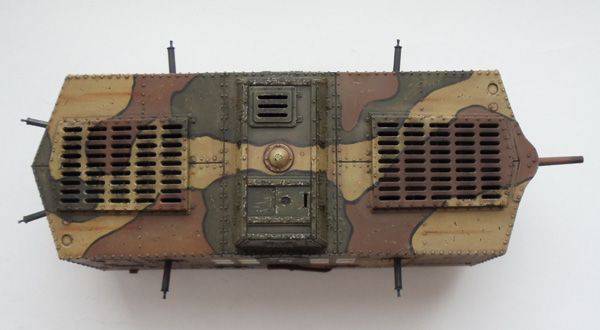
A7V - top view
However, even when a turret appeared on British tanks, medium tanks were still equipped with a whole battery of machine guns. For example, the Vickers Mk.II Medium had four Hotchx machine guns at once, or two Vickers and two Hotchkiss. Of these, two were located in the hull along the sides, one was paired with a gun, another one was used as an anti-aircraft gun in the rear section of the tower. That is, in theory, all these tanks were supposed to create around themselves a zone of continuous machine-gun fire!
Mk.VIII - top view.
In the future, the rhombic form of the first English cars and sunk into oblivion, without leaving a continuation. The French concept of a single-turreted tank, armed with either a single gun or a single machine gun, proved to be more viable. However, already on the Italian tank "Fiat-3000" two machine guns were installed in the turret at once, which, however, is connected not so much with the engineers' plan, as with the sad need to compensate for the low combat qualities of the Fiat machine guns.
Mk.IV - the covers of Lewis machine guns are clearly visible, which turned out to be, however, not quite suitable for tanks.
However, as time went on and ... surprisingly, the old approaches even in new designs (here it is the human conservatism of thinking!) Continued to dominate. For example, the Vickers-Medium tanks were supposed to be replaced by Vickers-16 T tanks, and what? He received three towers, two of which, located in front of the main one, received two machine guns at the very beginning, and only then they were left one by one, so their total number was three, so there would be five. In 1928, the Vickers-6 T tank was launched and ... its first version (Type A) was equipped with two turrets, each with a machine gun. But Type B - single-turrets with a 47-mm short-barreled gun OQF 3-pdr machine gun did not have, because it was believed that the cannon and machine-gun tanks on the battlefield "should support each other." “Six-tones” were adopted in many countries, including the USSR and Poland, and also from the very beginning in a two-tower and two-machine-gun variant. It was supposed to develop in such a way the strongest machine-gun fire on both sides, when the tank moves the trench, will rise over it and be able to fire at it “in two fires”!
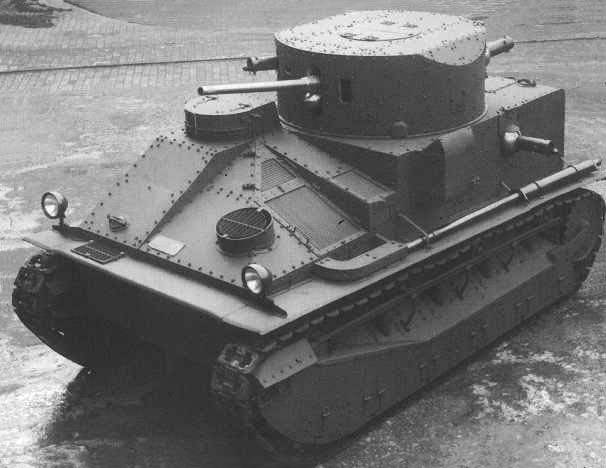
Vickers Medium.
Thus, one machine gun in the interval between the world wars was left only on wedges such as the English carden-Lloyd tankettes and light machine-gun reconnaissance tanks like the Soviet T-37. Well, during the Second World War, one machine gun stood on the British infantry tanks "Matilda-I", "Matilda-II" and their development - the tank "Valiant", as well as the tank "Valentine" and this was considered sufficient. The famous "Kruseyder" first also received two machine guns, one in the machine gun turret next to the driver's seat. But then they decided that this was an obvious exaggeration and was abandoned in favor of thickening the armor. One machine gun in the tower had Soviet T-26 and BT of all modifications, and this was also considered quite sufficient, because the T-28 had four machine guns (with five anti-aircraft guns), and the T-35 had six (seven with anti-aircraft guns). However, both the T-26 and the Bteshki also received an anti-aircraft machine gun, and some even the famous “Voroshilovsky” machine gun in the back of the tower, but in general they did not add firepower to them. In battle, there was enough of a single machine gun coupled to a cannon.
Machine gun "Maxim" in the battlements of the tank A7V. The rate of firing, artificially reduced to 400 rpm, reduced the capabilities of these machine guns compared to the base model. Museum in Münster.
As for the Americans, their “Christie tank” initially had one cannon and one machine gun, although there were variants of tanks, literally stuck with machine guns, the number of which reached five: one in the hull and four in the fixed wheelhouse.
Tank Christie arr. 1919 with multi-tiered armament: 57-mm cannon in the lower turret and the Browning 1919 machine gun at the top.
Then they had a medium tank M2 and that’s why the Americans armed them with machine guns in full. Two fixed machine guns in the body, four in the wheelhouse at its corners, and two anti-aircraft guns, which were installed, if necessary, on special brackets. True, the machine gun paired with the 37-mm gun in the turret was missing. But there was also a modification with a twin machine gun and an anti-aircraft 12,7-mm machine gun on the turret. With so many (eight machine guns and one spare in addition!) This tank can be considered the absolute leader in terms of machine gun weapons. By the way, these completely “not average” cars (due to very thin armor and weak weapons) in the М2А1 variant were even supplied to the USSR under lend-lease and took part in the battles in May 1942 of the year, but it is clear that all were soon destroyed .
Tank "Cromwell"
The two-machine gun system became the global trend during the war: one machine gun in the body, the other in the turret. According to this scheme, the most massive tanks of the Second World War were equipped with machinegun armament: the Soviet T-34 and such vehicles as the KV, the Sherman, the Cromwell, the Comet, the German T-III, the T-IV and the Tiger "And" Panther ". Although the "treshki", and "fours", and all the other machines of the Nazis somewhere from 1943, they also received an anti-aircraft machine gun. However, the rifle caliber that everyone else had on them. The Cromwell did not receive the anti-aircraft machine gun; neither did the Li / Grant tanks, which had three or four machine guns, including the machine gun in the top commander's turret of the MNNUMX Lee. But the "Sherman" as the anti-aircraft guns and were "Browning" rifle caliber, and the same "Browning" machine gun M3 caliber 2-mm. That is, if we consider the main machine guns standing in the hull and the turret, then two machine guns became the norm for all "medium" and "heavy" machines, but the anti-aircraft machine guns were used very different. Rifle caliber from the Italians, Germans and Japanese, and large-caliber - from the Americans.
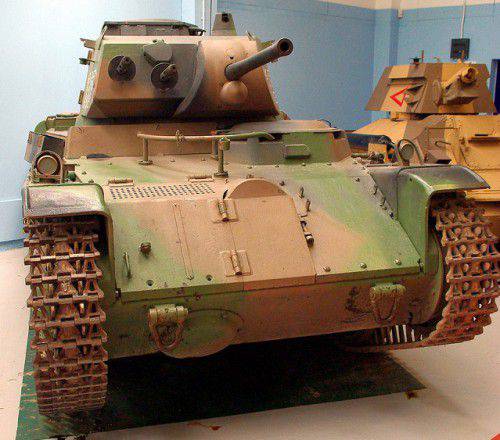
The Hungarian tank Toldi-II also had two machine guns, but both were in the turret. Bovington Museum.
Thanks to the use of twin machine guns, the Italians got tanks with three machine guns in the hull and a turret: the Sparks in the hull and one in the turret in the same mask as the gun. On one of the modifications of the T-IIIE tank, the Germans also placed a machine gun sparck next to the 37-mm turret gun and got a three-gun tank, but this innovation did not increase its combat power, but it became more difficult to service it and later they refused this option. Interestingly, experienced Japanese tanks were equipped with machine guns on a rhombic system: one forward in the hull, one backward in the turret and two along the sides. Then this was also abandoned in favor of one machine gun in the body and one in the turret ... for some reason deployed back. The third was the anti-aircraft machine gun, but they were not placed on all machines.
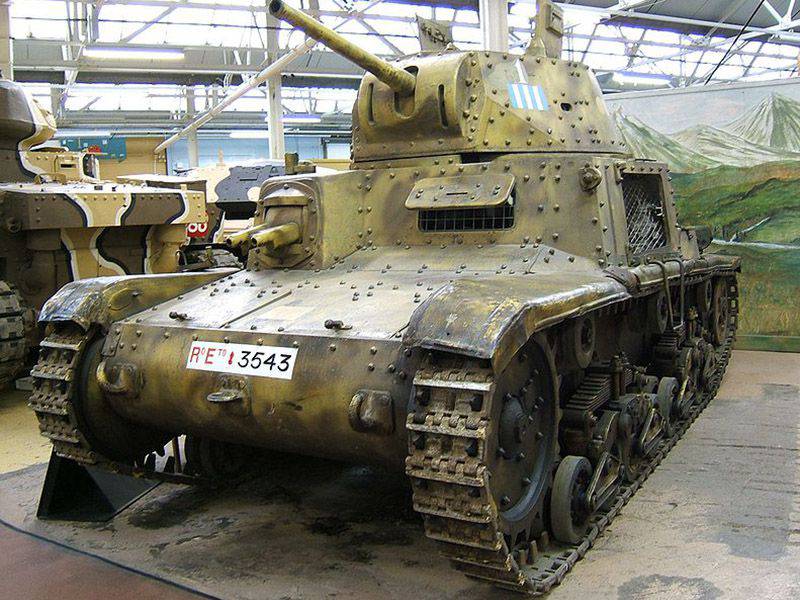
Italian tank M13-40 from the museum in Bovington.
Here we should again return to the American tanks, because having overcome the crisis of the beginning of the war, they began to produce more or less satisfactory tanks, and here for some reason the light tank М3 again received clearly excessive machine gun weapons. One standard American tank gun "Browning" М1919А1 in the body, two in the sponsors on the left and right for firing forward, then a machine gun paired with a gun and, finally, an anti-aircraft machine gun on the turret. Only five machine guns, is it a lot for a light tank? And it is hardly surprising that soon the machine guns were removed from the sponsors, and their holes were welded with armor plates, turning it into a standard "two-gun" tank with additional anti-aircraft weapons.
M3 "Stewart" from the museum in Bovington.
It would seem that the idea died, well, the tank does not require so many machine guns, but the last multi-gun tank did appear, and it was here in the USSR. We are talking about an experienced tank Zh.Ya. Kotin EC-7, created immediately after the war, and so on it, in addition to the gun, eight machine guns were installed, two of them with the caliber 14,5-mm KPVT and six 7,62-mm SGMT. One KPVT and two SGMT were in the cannon mask, the second KPVT was on the turret on the roof of the tower, of the remaining four SGMT, two were in the stern of the tower to shoot backwards and two in the fenders for firing ahead. All this arsenal, except for machine guns, coupled with a gun, was equipped with a remote electric drive and could be induced from inside the tank. The ammunition consisted of 400 14,5-mm cartridges and 2500 7,62-mm. It is clear that he weighed quite a bit, adding the weight of this already very heavy machine, but in the end it never went into a series, and no other army in the world allowed itself to such multi-bullet monsters.
EC-7 in our Kubinka.
At present, one rifle caliber machine gun, paired with a cannon and a large-caliber anti-aircraft machine gun on the roof of the tower, has become the traditional scheme. However, on many tanks and anti-aircraft machine guns again have a rifle caliber, so what is the best caliber for the "anti-aircraft guns" has not yet been decided. As for the absolute leader in terms of the number of machine guns mounted on it, those are today Israeli Merkava tanks. On some of them, besides a machine gun coupled with a cannon, two more are installed above the upper hatches of the tower, and one 12,7-mm with a remote control is fixed above the barrel.
Time will tell how many machine guns the designers will consider optimal for the tank, and whether six-barreled high-speed machine gun installations will appear on it.
Fig. A.Shepsa
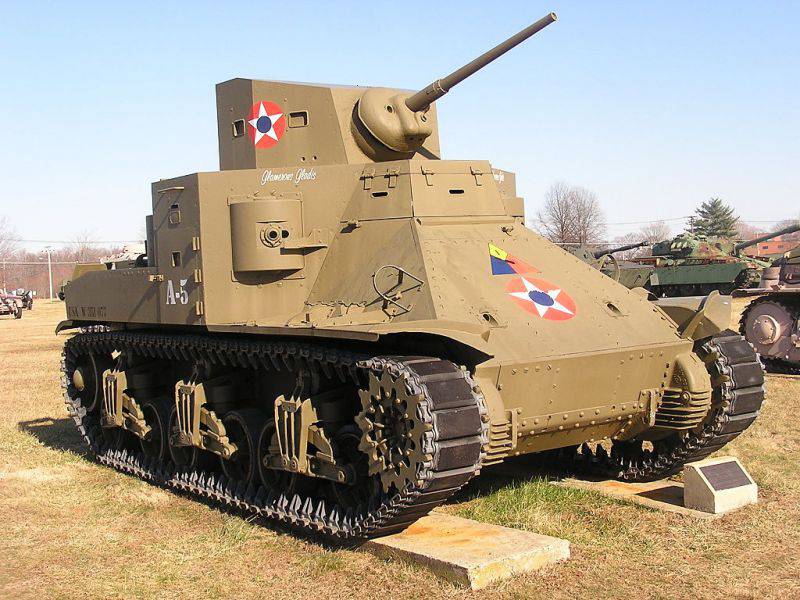
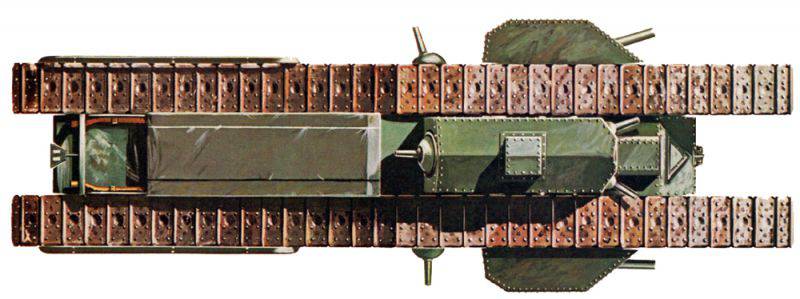
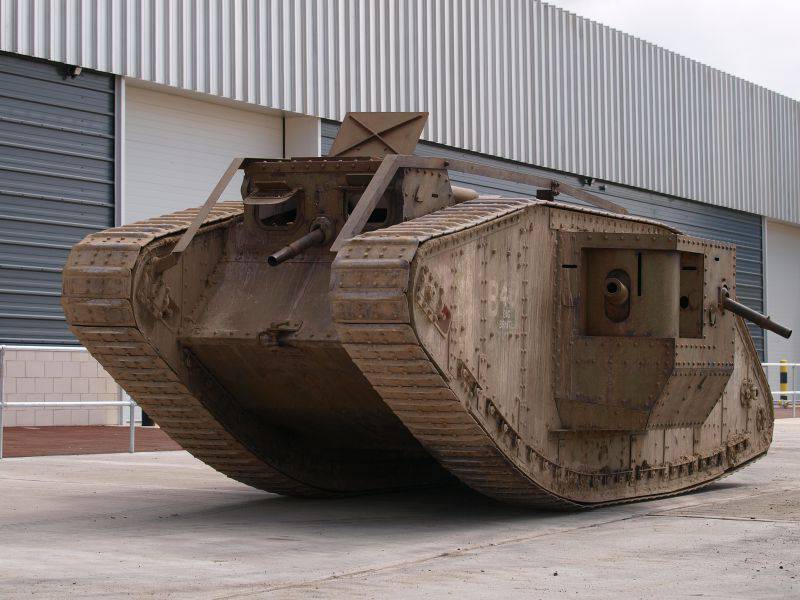
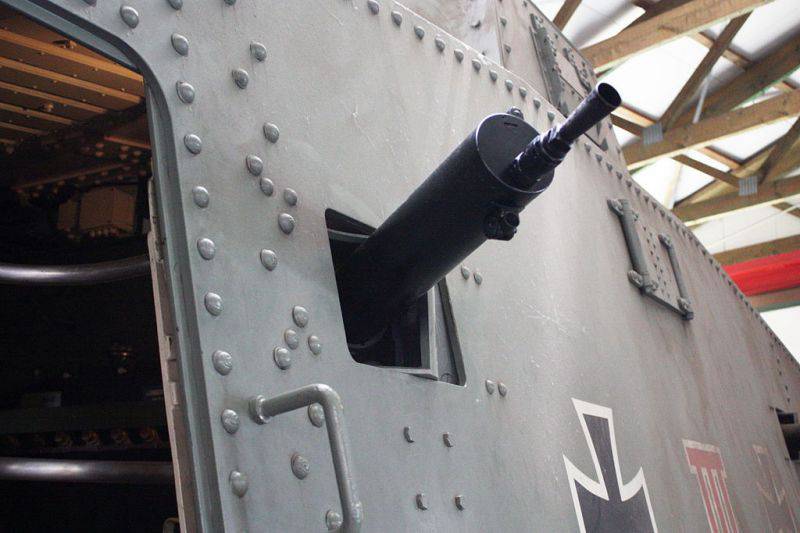
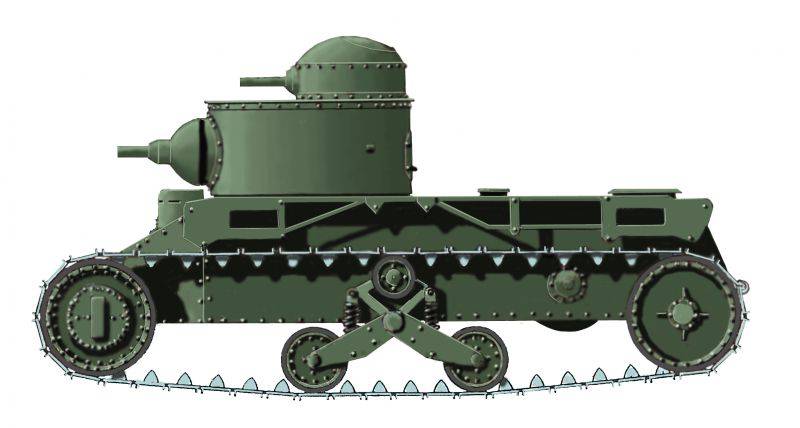
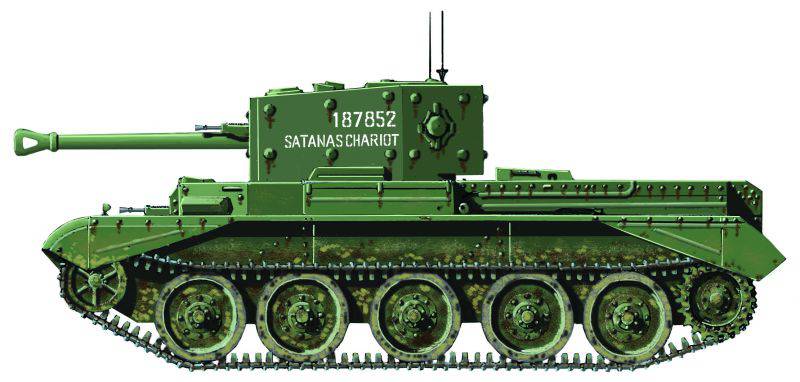
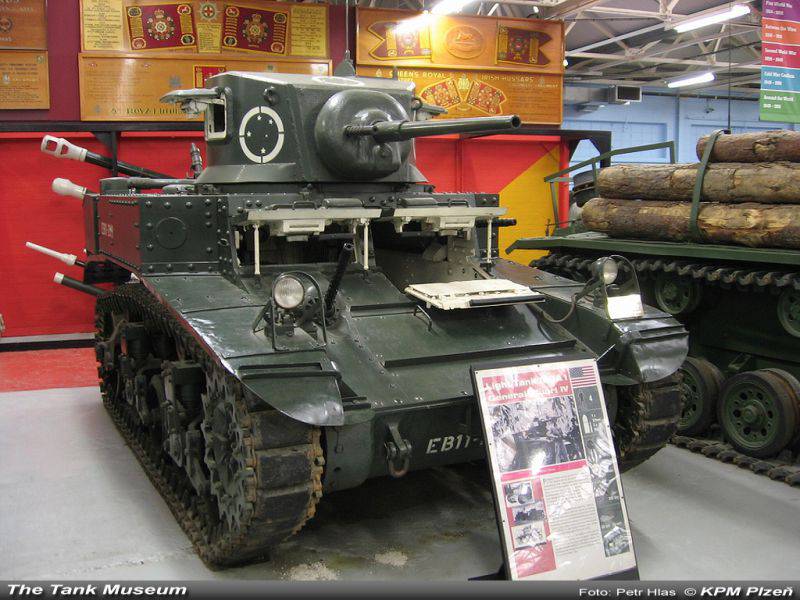
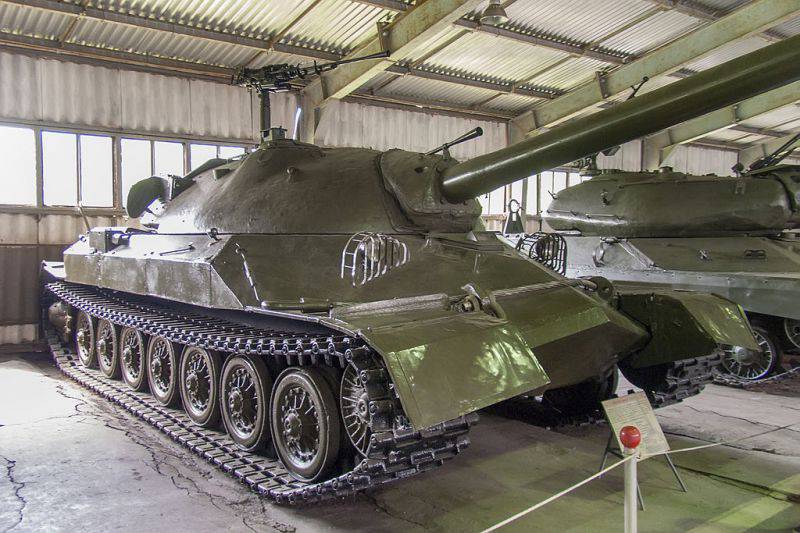
Information